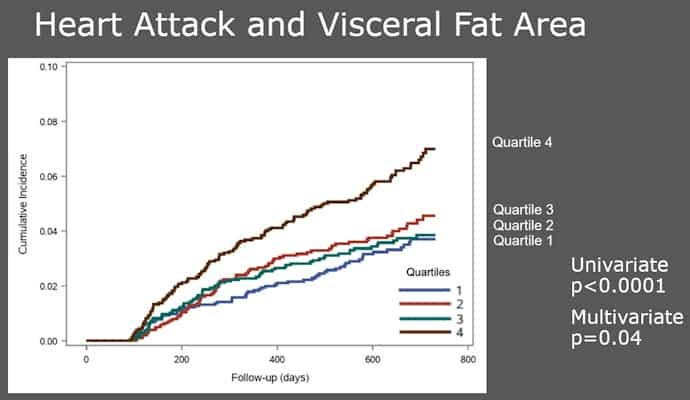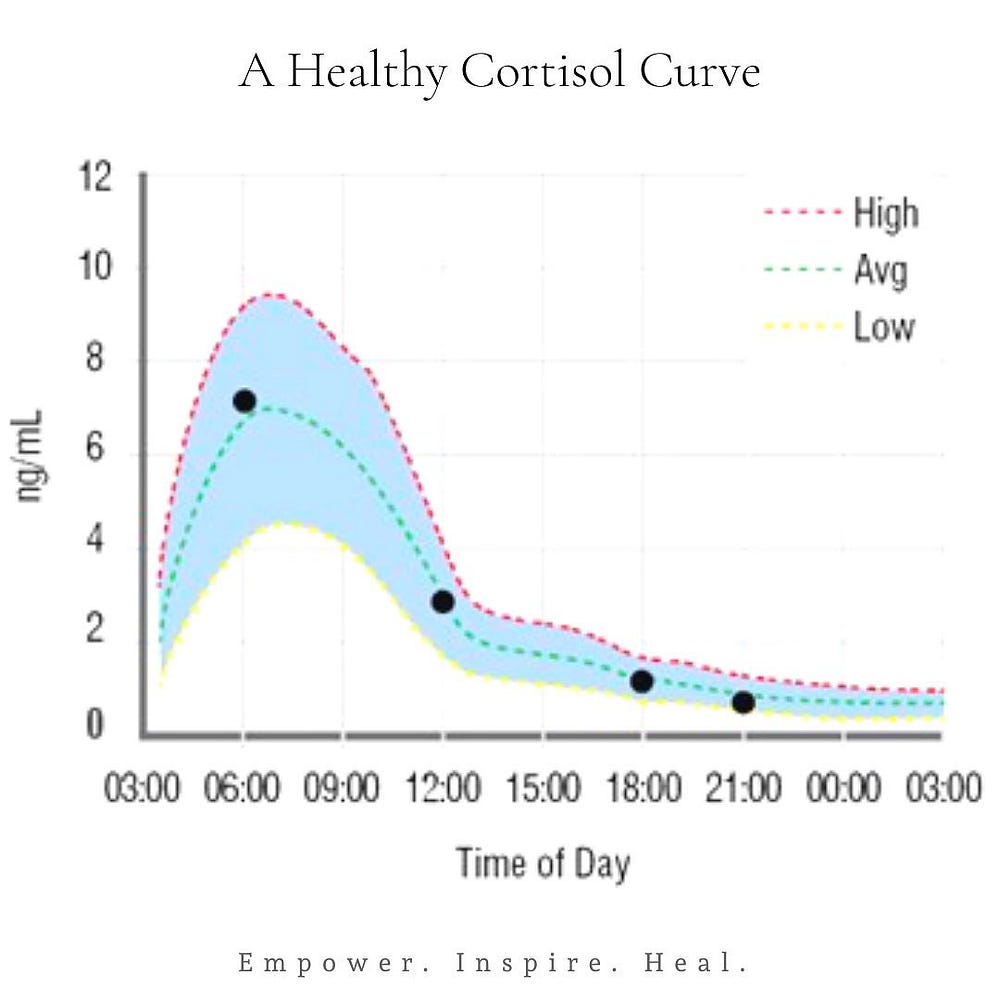The Visceral Truth: Why Not All Fat Is Equal
Why visceral fat is so detrimental and 3 steps to reduce it

For the longest time, I associated all body fat (adipose tissue) as detrimental to favorable health outcomes. I believed that fat was fat and the mere presence of it on my body was to be avoided.
This is not the case.
Not all fat has negative health implications. The major distinction I would like to make is the difference between subcutaneous and visceral fat.
Subcutaneous fat is the adipose tissue that lies beneath the skin and functions as an energy storage, temperature regulator, and protective layer. It has a lower metabolic activity and carries a lower risk to health than visceral fat.
This type of adipose tissue is thought to act as a metabolic sink (absorbs or utilizes a significant amount of energy during exercise, thereby contributing to overall metabolic health) and is therefore protective.
This is the vanity fat that makes up the majority of adipose tissue in the body and for some people is the hardest to lose.
On the other hand, visceral adipose tissue is stored in the abdominal cavity around internal organs.
Reasonable amounts of subcutaneous fat are considered normal, but visceral fat that is too high is associated with higher health risks, such as metabolic dysfunction, type 2 diabetes, and cardiovascular disease.
Reducing visceral fat is crucial, as it plays a key role in promoting overall health and mitigating the risk of chronic diseases.
Causes
The main contributors to visceral fat buildup are a sedentary lifestyle, poor food choices (particularly processed and high-sugar foods), and chronic stress.
As seen in the line graph below, the greater the amount of visceral fat (as registered in quartiles) the greater the incidence of heart attacks.
There is a small difference in outcomes from people in the first, second, and third quartiles, the most substantial impact on reducing heart attacks is staying out of the 4th quartile (bottom quarter of results).

Cardiovascular disease is the single biggest condition that kills the most people globally, with one out of 6 of all deaths associated with cardiac arrest.
Visceral fat is a driver of cardiovascular events. The more you have, the greater chance you will succumb to a heart attack.
Testing
At first glance, it’s often difficult to tell how much visceral fat someone might have. Just because someone looks healthy (fairly normal waistline and overall weight) does that mean they also have a normal amount of visceral fat?
Not necessarily.
The gold standard for determining visceral fat is using a DEXA scan: which offers details about your muscle mass, body fat percentage, and bone density.
It is useful for assessing your degree of physical fitness. The technology called dual-energy X-ray absorptiometry, or “DEXA,” measures bone density and body composition by utilizing two low-energy X-ray beams.
These low radiation tests are highly available and affordable, with tests ranging from $50–300.
Other tests that can determine visceral adiposity are CT scans and full-body MRIs.
For those who don’t have access to these tests, there are numerous at-home tests you can try that have varying levels of accuracy.
As mentioned above, waistline isn’t necessarily directly related to visceral fat, but for those with a high level of central adiposity is highly correlated with high levels of general adiposity.

A waist circumference of 80 cm or more for females and 94 cm or more for males could mean that you have excessive visceral fat.
Another test is to lie down on your back. The more your belly maintains the same shape as if you were standing, the higher the level of visceral fat.
Someone with high levels of subcutaneous fat will see their belly flatten some as they lie. The opposite holds for someone with substantial visceral adiposity.
These tests can be used as a rough gauge, but they are not scientific or specific enough to tell you the significance of visceral adiposity.
Get a DEXA scan, your future self will thank you
3 steps to ridding yourself of visceral fat
1. Nutrition
I like to avoid the word ‘diet’ whenever possible, as 95% of dieters eventually revert to their eating ways.
Habits are hard to change, especially when you are battling multimillion-dollar companies that have an explicit goal to get you hooked for life.
So what should you do? Drop the diet and pick up a nutrition plan.
Three changes will lay the foundation for visceral fat reduction.
Exchange saturated fats for monosaturated fats when possible
Keep ultra-processed foods to 20% of your diet or less. See my previous post to learn more about processed foods.
Have as little sugar as possible
2 Exercise
There is something about rapid movement that has such a profound impact on the human anatomy. Building muscle by way of resistance training and shedding pounds through aerobic conditioning both have a positive impact on excess adiposity, but there is something about explosive movements that have the most substantial impact.
HIIT, or High-Intensity Interval Training, is a workout strategy alternating short, intense bursts of exercise with brief periods of rest or lower-intensity activity.
It requires maximal mitochondria activation and subsequent biogenesis (growth)of new stronger Mitochondria.
Mitochondria play a role in fat metabolism, and their efficiency can impact visceral fat levels.
Moving quickly tells the body to prepare for future sprints. This signals the shedding of visceral fat, which is detrimental to future anaerobic movement.
HIIT is a highly effective way to lose both body and visceral fat mass. High-intensity training at above 90% peak heart rate was found to be effective for the whole body, removing both body fat mass and visceral fat mass.
Moving is necessary, but if you can, move quickly.
3 Stress
Stress is a bitch.
It creates a cascade of health issues if left unchecked. One of these negative health outcomes is an unnecessary increase in cortisol.
Cortisol gets a bad rap. Everyone is trying to dampen the cortisol in their body.
This isn’t necessarily beneficial.
Cortisol does have many benefits when it is produced at the correct time in the appropriate amounts.
When cortisol becomes a problem, it becomes elevated for prolonged periods. According to a study, cortisol was found to increase approximately 9 times in stressful periods compared with that in relaxed periods.
Yes, 9 times!
This is an example of excessive excretion of cortisol, which can help regulate your stress response, increase the metabolism of glucose and help to control blood pressure.

When cortisol is elevated too long into the day, several side effects occur, including fatigue, irritability, intestinal issues and most notably visceral fat gain.
Visceral fat in the abdomen is metabolically active (proliferating; growing cells) and increases insulin resistance, inflammatory cytokines, and cardiovascular disease.
The stress and unhealthy diet required to accumulate high levels of visceral fat have consequential effects, including impaired glucose response, increased inflammation, fatigue, and mood fluctuations.
Stress begets stress.
Find something in your life that lowers your stress: breath work, yoga or time in nature. Whatever the mechanism, find a way to initiate it.
Start small, but just start now.
I’d love to know what you thought of this post, feel free to click reply and let me know.




